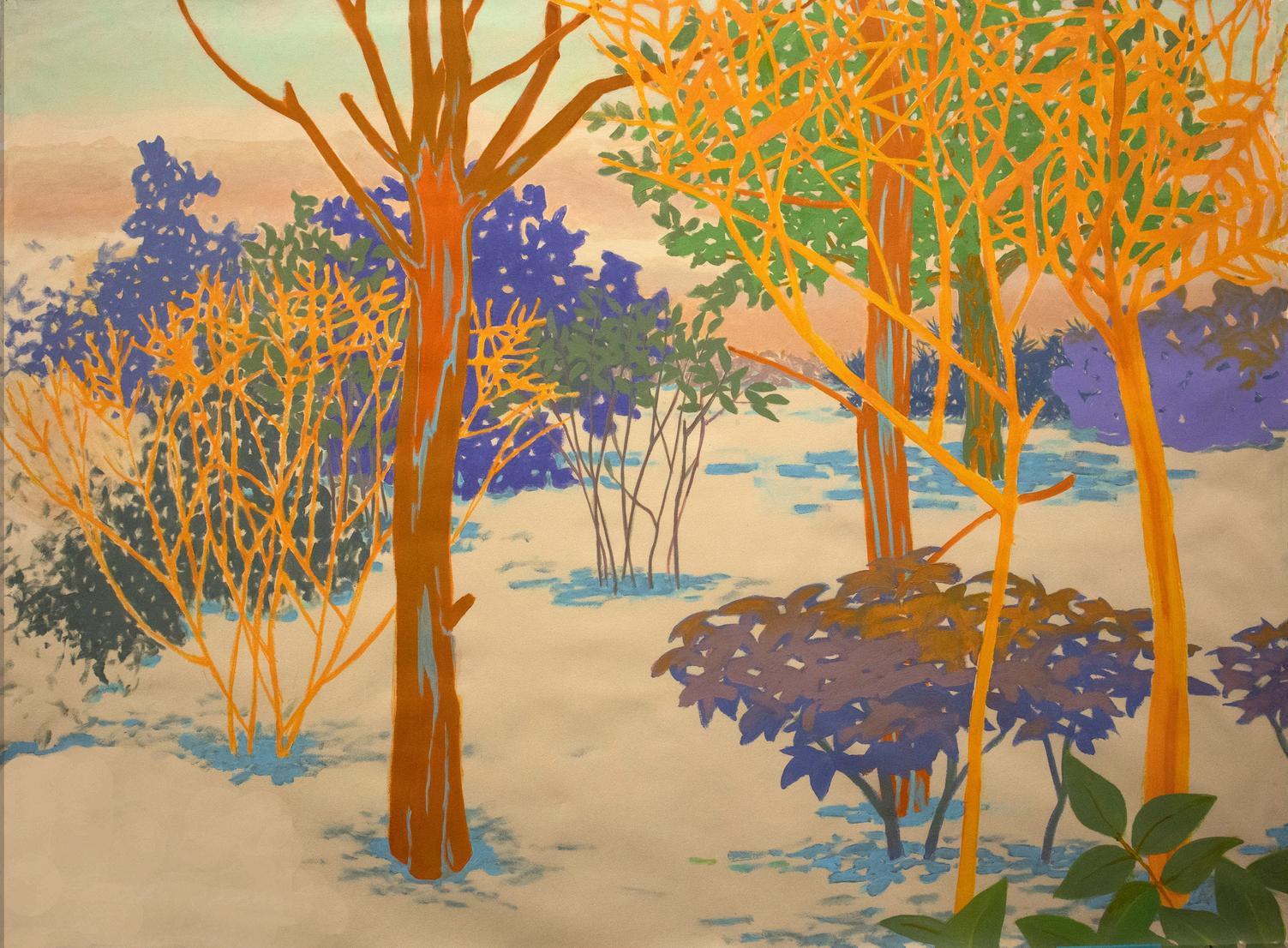

GARDENWORK GILLIAN
September 5 through October 12, 2024
529 W 20th Street 6W
New York, New York
Gillian Theobald
Gillian Theobald’s artistic practice melds fictive landscapes with materials found in life, transgressing boundaries between imagination and reality. These works–joint in their abstract language–employ distinct methods of creation. Theobald deals in both relief collages and paintings, whose respective practices form a cohesive, poignant body of work. Though they draw upon an imagination of natural features, Theobald’s verdant spaces have never existed before. Of her recent work, the artist states, “These paintings are not an abstraction of an actual landscape, but the generation of one that did not previously exist.” Theobald’s practice is indebted to a rich history of spiritual connection to the landscape; one that transcends geographic and chronological boundaries.
The landscape has historically been a fraught subject: It is bound to social, political, and aesthetic problems and, polemically, often idealized. Theobald’s project aims to depart from the idealized landscape, instead imagining the image. These images do not emerge without context: Theobald engages in a practice of interactive dialogue from the initial moment of conception. She states, “As soon as I make a few marks, I have to take those marks into consideration.”
Theobald’s frank titles–Mimosa, Thicket, Tulips...–evoke the basest connection between body and nature, addressing an intuitive feeling rather than a material experience. The artwork is titled for the sensual encounter with its subject matter. As such, her work possesses a consuming quality: Flecks of warm light emerge from the canvas and envelop the image’s viewer, bringing Theobald’s fictitious landscapes into reality not only by being seen, but by being felt.
Theobald’s trained hand exacts what has been referred to as “reductive expressionism:” A pared down iteration of the twentieth-century movement’s brazen application of color and gesture. This historical grounding functioned to support the emergence of Theobald’s imaginary places. In a 1987 review of her work, Robert McDonald cited a key advantage of Theobald’s particular formal language, calling attention to her use of “protective restraint.” Indeed, while immersive,Theobald’s work does not possess the protrusive quality that her expressionist predecessors exercised. Rather, color and form bridge the distance between viewer and object, but do not impose upon real space.

“Fictive
Space (Cosmos) 125,” 2024
acrylic on canvas over panel
24 x 24 inches

“Fictive Space (Tulips) 124, ” 2024
acrylic on canvas over panel
24 x 24 inches

“Fictive Space (Mimosa)
125,” 2024
acrylic on canvas over panel
24 x 24 inches

“Fictive
Space (Winter) 120 ” 2023
acrylic on okawara paper
28.5 x 38.5 inches

“Fictive Space (Papyrus) 117, ” 2023
acrylic on okawara paper
28.5 x 38.5 inches

“Fictive
Space (Dusk) 118,” 2023
acrylic on okawara paper
28.5 x 38.5 inches

“Fictive Space (Thicket,) 121, ” 2024
panel
acrylic on canvas over
36 x 48 inches

“ 2-12-2024, ” 2024 acrylic, found packaging, glue 8 x 9 x 1.25 inches

“ 7-31-2023, ” 2024 acrylic, found packaging, glue
8.5. x 7.5 x .75 inches

“1-15-2024,” 2024 acrylic, found packaging, glue 9 x 9 x .5 inches







